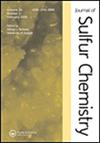有机酸添加剂对钙基浆料中亚硫酸盐氧化的影响
IF 1.6
3区 化学
Q3 CHEMISTRY, MULTIDISCIPLINARY
引用次数: 0
摘要
在烟气脱硫系统中对亚硫酸盐离子进行强制氧化以获得高质量的石膏。研究了钙基浆料中添加甲酸、乳酸、丙烯酸、乙酸、丙酸和己酸对亚硫酸盐氧化的影响。当有机酸的pKa值较小时或碳链较长时,亚硝酸盐的氧化被抑制。在相同的料浆pH为6的情况下,添加甲酸和乳酸的料浆的SO42-馏分比不添加添加剂的料浆的SO42-馏分低一半,其pKa值最小。碳链最长的己酸的加入与无添加剂浆的SO42分数相近。这些结果表明,有机酸对亚硫酸盐氧化的抑制作用更多地表现为有机酸的酸性。浆料中的SO42分数影响石膏晶体的生长和质量。添加乙酸的浆料SO42分数最高,可形成高质量的石膏晶体。研究结果有助于选择脱硫效率高的有机酸类添加剂,生产高质量的石膏。本文章由计算机程序翻译,如有差异,请以英文原文为准。
Effect of organic acid additives on sulfite oxidation in a calcium-based slurry
The forced oxidation of sulfite ions was conducted to obtain high-quality gypsum in the flue gas desulfurization system. The effects of formic, lactic, acrylic, acetic, propionic, and hexanoic acids added to calcium-based slurry on sulfite oxidation were investigated in this study. Sulfite oxidation was inhibited when the pKa value of organic acids was small or the carbon chain was long. In the identical slurry pH 6, the SO42- fractions of slurries with formic and lactic acids, which have the smallest pKa values, were lower than half that of the additive-free slurry. The addition of hexanoic acid with the longest carbon chain showed a similar SO42- fraction to that of additive-free slurry. These results indicate that the inhibitory effect on sulfite oxidation is more expressed by the acidity of organic acids. The SO42- fraction in the slurry affects the growth and quality of gypsum crystals. The slurry with acetic acid presented the highest SO42- fraction and resulted in the formation of high-quality gypsum crystals. The findings of this study can contribute to the selection of organic acid additives with high desulfurization efficiency and the production of high-quality gypsum.
求助全文
通过发布文献求助,成功后即可免费获取论文全文。
去求助
来源期刊

Journal of Sulfur Chemistry
CHEMISTRY, MULTIDISCIPLINARY-
CiteScore
4.10
自引率
9.10%
发文量
38
审稿时长
6-12 weeks
期刊介绍:
The Journal of Sulfur Chemistry is an international journal for the dissemination of scientific results in the rapidly expanding realm of sulfur chemistry. The journal publishes high quality reviews, full papers and communications in the following areas: organic and inorganic chemistry, industrial chemistry, materials and polymer chemistry, biological chemistry and interdisciplinary studies directly related to sulfur science.
Papers outlining theoretical, physical, mechanistic or synthetic studies pertaining to sulfur chemistry are welcome. Hence the target audience is made up of academic and industrial chemists with peripheral or focused interests in sulfur chemistry. Manuscripts that truly define the aims of the journal include, but are not limited to, those that offer: a) innovative use of sulfur reagents; b) new synthetic approaches to sulfur-containing biomolecules, materials or organic and organometallic compounds; c) theoretical and physical studies that facilitate the understanding of sulfur structure, bonding or reactivity; d) catalytic, selective, synthetically useful or noteworthy transformations of sulfur containing molecules; e) industrial applications of sulfur chemistry; f) unique sulfur atom or molecule involvement in interfacial phenomena; g) descriptions of solid phase or combinatorial methods involving sulfur containing substrates. Submissions pertaining to related atoms such as selenium and tellurium are also welcome. Articles offering routine heterocycle formation through established reactions of sulfur containing substrates are outside the scope of the journal.
 求助内容:
求助内容: 应助结果提醒方式:
应助结果提醒方式:


